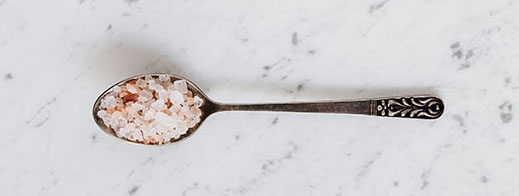The Facts About MSG

What is MSG?
MSG, which is short for monosodium glutamate, is found naturally in some foods, including cheese and tomatoes. People also commonly use it as a flavor enhancer, especially for Asian meals, although it’s super versatile and can be used in a variety of dishes. MSG creates a meaty umami flavor in whatever foods it’s added to. Umami, which means “a pleasant savory taste,” is Japanese and is considered one of the five basic tastes, along with salty, sour, bitter, and sweet.
This delicious flavor enhancer is a white, crystal-like powder that resembles sugar or salt. It’s derived from glutamate, or glutamic acid, an amino acid that occurs naturally in the human body and serves many important functions, including the formation of proteins. Glutamate also doubles as a neurotransmitter that helps send signals between nerve cells in the brain. It is essential for learning and memory.
Is MSG Bad for You?
Although you may hear many tall tales out there about “Chinese restaurant syndrome” and “MSG symptom complex,” MSG is not actually bad for you. In fact, the FDA categorizes MSG as “generally recognized as safe,” alongside popular spices and food ingredients, such as pepper, basil, salt, cayenne pepper, cinnamon, peppermint, vanilla, and many more. Negative reactions to Chinese food were first reported in 1968, and because MSG is commonly used to prepare Chinese food, people thought MSG was the culprit. Since the early reports, countless studies have shown there is no link between MSG and this complex of symptoms.
However, some people have reported symptoms of MSG sensitivity, such as tingling, palpitations, and flushing, but this has been after 3 or more grams of MSG without any food. The typical serving of an MSG-enhanced food includes fewer than .5 grams of MSG, so it’s unlikely that you’ll ever consume enough to experience such a reaction.
The Problem with the Term “Chinese Restaurant Syndrome”
Kikunae Ikeda, a Japanese chemist, discovered MSG in 1907 when he was investigating the properties of several foods, including his wife’s seafood soup broth. He eventually patented MSG and the rest was history. By the 1950s, MSG had made its way to the U.S. and was used in many packaged foods, such as baby food and popular snacks. In 1968, a doctor published an article in the New England Journal of Medicine complaining of what he called “Chinese Restaurant Syndrome”—a myriad of symptoms including heart palpitations, weakness, and pain radiating down his arms. And thus, this term was born. Soon followed an outpouring of similar complaints from people who’d consumed Chinese food, and yet, when researchers studied the effects of MSG, they found that most people, even those who claimed they had an MSG sensitivity or allergy, didn’t experience any negative side effects when they weren’t aware they were eating it.
In 1993, Merriam-Webster added “Chinese Restaurant Syndrome” to its dictionaries, a phrase defined as “A group of symptoms (such as numbness of the neck, arms, and back with headache, dizziness, and palpitations) that is held to affect susceptible persons eating food and especially Chinese food heavily seasoned with monosodium glutamate.” This definition has contributed to the stigmatization of Asian cooking for decades.
Known as the #RedefineCRS campaign, activists have been calling for Merriam-Webster to set the record straight by updating its entry to “an outdated term that falsely blamed Chinese food containing MSG, or monosodium glutamate, for a group of symptoms (such as headaches, dizziness, and heart palpitations).” The campaign was created by Ajinomoto, a Japanese company that is the worldwide leading producer of MSG. And it’s a valid campaign, as countless studies have concluded that MSG is safe to consume. Not to mention the fact that it’s not even specific to Chinese food—it can be found in tons of popular fast foods, condiments, and snacks, which means the term “Chinese Restaurant Syndrome” is both incorrect and misleading.
What Foods Include MSG?
MSG naturally occurs in many foods and food products, such as:
- Cheese
- Tomatoes
- Hydrolyzed vegetable protein
- Yeast extract
- Hydrolyzed yeast
- Soy extracts
- Protein isolate
MSG is also commonly added to delicious foods, such as Chinese food, Kentucky Fried Chicken, Chick-fil-A, Pringles, Doritos, seasoning blends, frozen pizzas, canned soups, bouillon seasonings, salad dressings, ketchup, barbecue sauce, soy sauce, and processed meats like beef jerky, sausages, hot dogs, pepperoni, lunch meats, as well as many low-sodium products.

